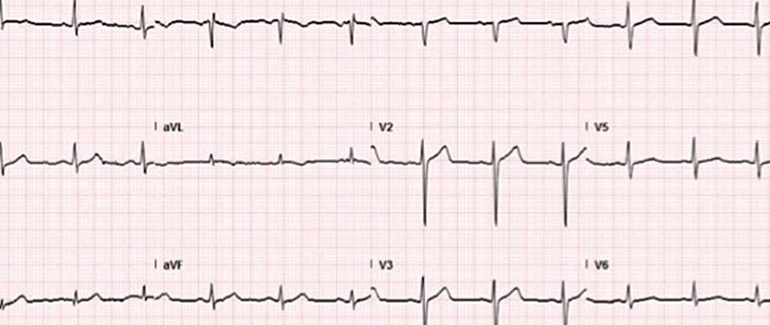
ECG
An electrocardiogram (ECG or EKG) is a diagnostic test that records the electrical activity of the heart over a specific period. This non-invasive test is commonly used to evaluate heart function, identify irregularities in the heart’s rhythm, and detect any signs of cardiac abnormalities. Here are key aspects of an ECG:
How an ECG Works:
- Electrodes:
- Small, adhesive electrodes are attached to specific locations on the skin. These electrodes detect the electrical impulses generated by the heart.
- Lead Placement:
- Electrodes are placed on various areas of the body, typically on the chest, arms, and legs. The specific placement of electrodes determines the “leads” that capture different views of the heart’s electrical activity.
- Recording:
- The ECG machine records the electrical signals generated by the heart and produces a visual representation of the heart’s activity on graph paper or a computer screen.
Components of an ECG:
- P Waves:
- Represents the electrical activity of the atria (upper chambers of the heart) as they contract.
- QRS Complex:
- Reflects the depolarization of the ventricles (lower chambers of the heart) as they contract.
- T Wave:
- Indicates the repolarization of the ventricles as they prepare for the next contraction.
Uses of an ECG:
- Diagnosis of Arrhythmias:
- Identifies irregular heart rhythms, such as atrial fibrillation, atrial flutter, ventricular tachycardia, or bradycardia.
- Ischemia and Infarction Detection:
- Identifies signs of insufficient blood supply to the heart muscle, which may indicate conditions like angina or myocardial infarction (heart attack).
- Assessment of Conduction Abnormalities:
- Detects abnormalities in the heart’s electrical conduction system, such as heart blocks or bundle branch blocks.
- Monitoring Cardiac Medications:
- Helps monitor the effects of certain medications on the heart.
- Preoperative Evaluation:
- Assessing cardiac function before surgical procedures to ensure the heart is stable.
- Screening for Cardiac Conditions:
- Used as part of routine health check-ups or screenings for individuals with risk factors for heart disease.
Types of ECG:
- Resting ECG:
- Conducted while the patient is at rest, providing a baseline measurement of the heart’s electrical activity.
- Holter Monitor:
- A portable device worn by the patient for 24 to 48 hours, continuously recording the heart’s activity for a more extended period.
- Stress ECG (Exercise or Treadmill Test):
- Performed during physical activity to assess the heart’s response to exercise.
- Ambulatory ECG (Event Monitor):
- Worn by the patient for an extended period to record intermittent symptoms or abnormalities.
An ECG is a valuable tool in the diagnosis and management of various cardiac conditions. Interpreting an ECG requires specialized knowledge, often done by cardiologists or healthcare professionals with expertise in cardiovascular medicine. The results of an ECG are an important part of the overall assessment of cardiac health and contribute to the formulation of treatment plans for individuals with heart-related concerns.



